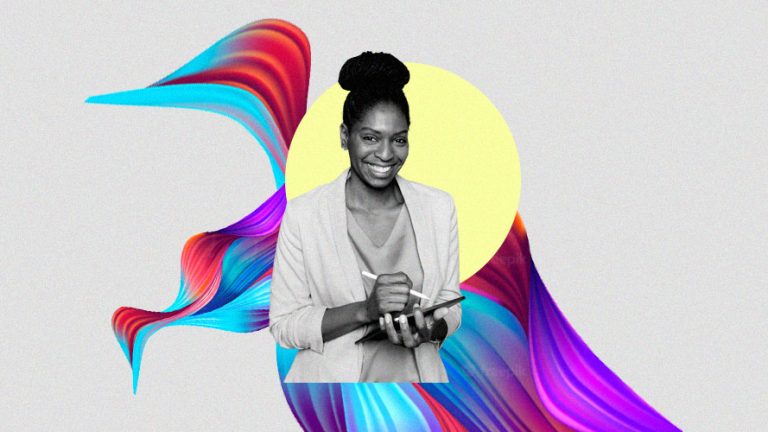The top 10 unsung female computer scientists and women in tech from the past
Both the first computers and the first programmers weren’t made by machines. In both instances, they were female computer scientists. History books frequently neglect to include the numerous contributions that women in STEM have made to technology.
But recently, at least a tiny bit of that has changed the tech women. Here are 10 outstanding unsubscribed women in tech and women entrepreneurs that you must know about when it comes to technology.
1. Ada Lovelace (The First Computer Programmer in History)
Very early in her life, she demonstrated a flair for mathematics, and her knowledge of and fascination with machines led to a collaboration with Charles Babbage. Babbage was the creator of the “Analytical Engine,” a complex machine that was never really built but had features similar to those of a contemporary computer. Ada frequently receives the moniker “the world’s first computer programmer” due to her work on the project. Lovelace’s notes on the Analytical Engine served as a source of inspiration for Alan Turing while he worked on the very first modern computer in the 1940s.
2. The First Computer Programmers (The Women of ENIAC)
The six women who were chosen by the ENIAC builders to become the first programmers in history worked on calculating missile trajectories using the ENIAC. They developed the first software program, computer memory and storage, and the first programming language as a result of their work for the army in 1940.
3. Grace Hopper (The Mother of Computing)
The “mother of computing” started out in the military as well. Grace Hopper, a member of the Navy Reserve, worked at the Harvard Computation Lab in the late 1940s, where she programmed the Mark 1 computer, which accelerated and improved military endeavors. Later, she changed jobs and became a senior mathematician at Eckert-Mauchly Computer Corp. The first machine geared toward business, the UNIVAC I, was created with her assistance.
4. Annie Easley (Thanks to her, hybrid car batteries exist today)
While employed at the organisation that would later become NASA in the 1950s, Annie Easley made the transition from “human computer” to computer programmer. Running simulations in a “Reactor Lab,” for crying out loud. She “designed and implemented code,” as per NASA, that resulted in the creation of the battery utilized in the first hybrid vehicles.
5. Mary Allen Wilkes (The creator of the gift known as “WFH”)
Mary Allen Wilkes was the first person to own a PC in her house, in addition to having contributed to the creation of what is now regarded as the first “personal computer.” Wilkes was a programmer and author of instructions for the LINC computer. She is recognised for having written the LINC’s operating programme handbook and for having developed the LAP6 operating system.
6. Adele Goldberg (Steve Jobs was motivated by her work to create the first Apple computer)
In the 1970s, Goldberg worked as a researcher at the PARC, a division of Xerox. She was the only female in a group of men who created the computer language Smalltalk-80 as well as the framework and “Graphical User Interface,” or overlapping display screen windows (GUI).
7. Joan Ball (The person who, in essence, created online dating)
Unsurprisingly, ‘Operation Match,’ the first computerized dating service, was created by a group of Harvard University males. But the first person to come up with a means to use a computer to verify compatibility was a woman in England. Joan Ball established and oversaw the St. James Computer Dating Service, which she eventually renamed Com-Pat (short for “computerized compatibility).
8. Karen Spärck Jones (Without her, people would have never considered Google-ing things)
Our daily use of search engines is dependent on Karen Spärck Jones, a female computer scientist, and her discoveries in natural language processing. She pioneered the use of thesauri in language processing, allowing computers to recognise words that are related to one another. Furthermore, she pioneered the notion and practises of “term weighing” in information retrieval, which assisted searches in determining which terms were the most pertinent.
9. Elizabeth “Jake” Feinler (This woman existed before there was GoDaddy)
Through the “Network Information Center,” the Stanford Research Institute served as the “node” in charge of managing the whole internet directory in its infancy (NIC). Additionally, Elizabeth (Jocelyn) Feinler, a researcher who preferred to go by “Jake,” oversaw the NIC.
10. Carol Shaw (The person who made retro gaming wonderful before it was retro)
Shaw is regarded as the first female programmer and designer of video games. She is most known for the 1982 game River Raid, although she also worked on a number of other titles, including 3-D Tic-Tac-Toe and Video Checkers. Polo, a 1978 unpublished work by her, is the first known game that she designed and programmed.






Add comment